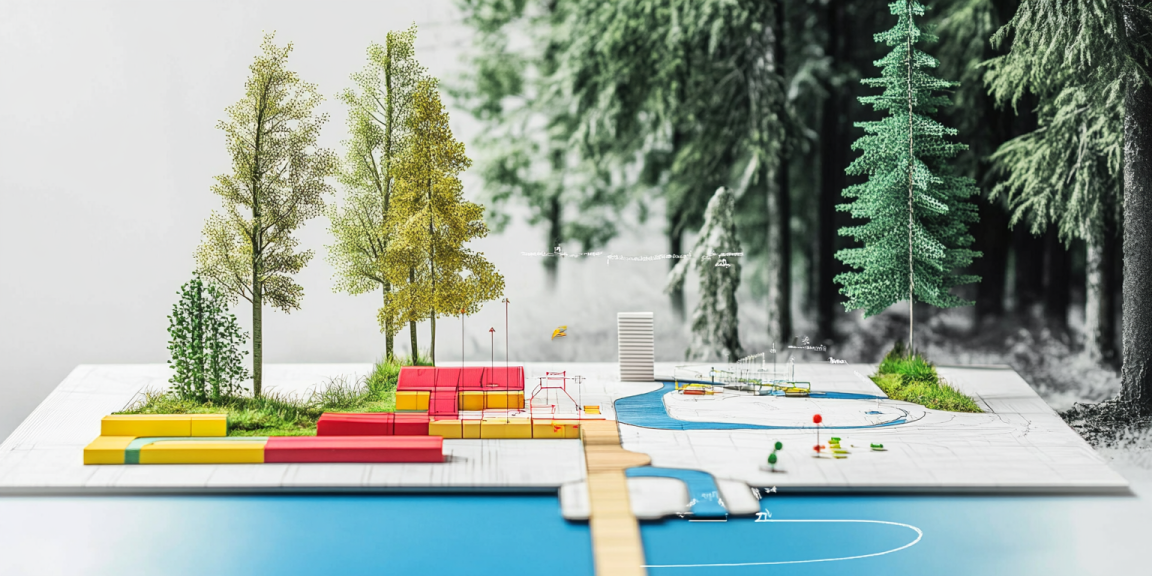As technology continues to evolve, the boundaries of user experience (UX) design are being pushed…

Getting started in design can seem overwhelming, especially with the plethora of tools available. For beginners, the challenge is finding user-friendly and cost-effective solutions to bring their creative visions to life. Fortunately, the design world offers a wide range of free tools that cater to both aspiring designers and professionals looking to refine their skills.
This blog explores the best free design tools for beginners, explaining their features, use cases, and how they can help kickstart your journey into the world of design.
Why Free Design Tools Are Perfect for Beginners
- Low Barrier to Entry
- Free tools eliminate the financial pressure of investing in premium software, allowing beginners to experiment without commitment.
- User-Friendly Interfaces
- Many free tools are designed with simplicity in mind, offering intuitive interfaces that make it easy to learn.
- Flexibility Across Projects
- From creating social media posts to designing logos or editing photos, free tools provide diverse functionalities.
- Learning Opportunities
- Many tools include built-in tutorials, templates, and community support, helping users build their skills as they design.
Top Free Design Tools for Beginners
Here’s a curated list of free design tools that cater to various needs, from graphic design and photo editing to prototyping and animation.
1. Canva
Best For: Graphic design and social media content
Canva is a favorite among beginners for its drag-and-drop interface and extensive library of templates. Whether you’re designing a logo, presentation, or social media graphic, Canva has you covered.
Features:
- Thousands of free templates for various design needs
- An extensive library of images, fonts, and icons
- Collaboration options for team projects
- Easy-to-use animation tools for creating dynamic content
Why Beginners Love It:
- No prior design experience is required
- Free version offers plenty of features for most projects
2. GIMP (GNU Image Manipulation Program)
Best For: Photo editing and advanced image manipulation
GIMP is a powerful open-source alternative to Adobe Photoshop. It’s ideal for beginners who want to learn the ropes of image editing without a subscription cost.
Features:
- Advanced photo retouching and editing tools
- Support for various file formats, including PSD
- Customizable interface with options for plugins and extensions
Why Beginners Love It:
- Comprehensive tools for photo editing
- Free access to professional-grade features
3. Gravit Designer
Best For: Vector graphic design
If you’re looking to explore vector-based design (think logos, icons, and illustrations), Gravit Designer is an excellent starting point.
Features:
- Intuitive interface with professional-grade tools
- Cloud-based, allowing you to work on projects from any device
- Free version includes a wide range of design options
Why Beginners Love It:
- A simple learning curve for vector design
- Cross-platform compatibility (Windows, macOS, Linux, and browser-based)
4. Krita
Best For: Digital painting and illustrations
For beginners interested in digital art, Krita provides an open-source platform tailored for illustrators, concept artists, and animators.
Features:
- Extensive brush library and customization options
- Advanced tools for animation and illustration
- Support for PSD files and layers
Why Beginners Love It:
- Designed by artists for artists
- Focuses on digital painting, making it ideal for creative beginners
5. Inkscape
Best For: Scalable vector graphics (SVG) and illustrations
Inkscape is another open-source gem, perfect for creating vector graphics. It’s widely used for designing logos, diagrams, and technical drawings.
Features:
- Advanced vector editing tools
- Extensive text and path operations
- Community support with regular updates and tutorials
Why Beginners Love It:
- Free and robust alternative to Adobe Illustrator
- Comprehensive set of features for vector design
6. Figma
Best For: UI/UX design and collaboration
Figma has gained immense popularity as a browser-based tool for UI/UX design. Its free version is perfect for beginners eager to explore web and app design.
Features:
- Real-time collaboration for team projects
- Prototyping tools to create interactive designs
- Cross-platform accessibility via web browser
Why Beginners Love It:
- Easy to learn and start designing immediately
- Great for teamwork and client feedback
7. Blender
Best For: 3D modeling and animation
Blender is a free, open-source software that caters to 3D artists, animators, and designers. While it has a steeper learning curve, it’s worth exploring if you’re interested in 3D design.
Features:
- Tools for modeling, sculpting, and rendering
- Support for animation, rigging, and simulations
- A vibrant community offering tutorials and resources
Why Beginners Love It:
- Completely free for all features
- Endless possibilities for creativity in 3D
8. Pixlr
Best For: Online photo editing
Pixlr is a browser-based photo editor that combines simplicity with functionality. It’s perfect for quick edits or creating visually appealing graphics.
Features:
- Easy-to-use interface with drag-and-drop tools
- AI-powered tools for background removal and enhancements
- Templates for creating graphics and social media posts
Why Beginners Love It:
- Accessible directly from a browser
- Perfect balance of simplicity and advanced features
How to Choose the Right Tool
With so many options available, selecting the best tool can be tricky. Consider these factors when making your decision:
- Your Goals
- Are you looking to edit photos, create graphics, or design websites? Choose a tool that aligns with your specific needs.
- Ease of Use
- For beginners, simplicity is key. Tools like Canva and Pixlr are great for quick learning.
- Functionality
- Evaluate the features you need. If you want to create detailed illustrations, tools like Krita or Inkscape may be ideal.
- Community and Support
- Look for tools with active communities and tutorials to help you learn.
- Scalability
- Consider tools that grow with your skills. For example, Figma and Blender offer advanced features for when you’re ready to level up.
Trends in Free Design Tools
As technology evolves, so do design tools. Here are some emerging trends:
- AI Integration
- Many tools now feature AI-driven options for automated editing, background removal, and content creation.
- Collaboration Features
- Tools like Figma and Canva prioritize real-time collaboration, making it easier for teams to work together.
- Cross-Platform Access
- Browser-based tools are becoming more popular, offering flexibility across devices.
- Focus on Accessibility
- Newer tools prioritize user-friendly interfaces and accessibility for all skill levels.
Tips for Getting Started
- Start Small
- Don’t overwhelm yourself with complex projects. Begin with simple designs and gradually expand your skills.
- Leverage Tutorials
- Most free tools come with built-in tutorials or online resources. Take advantage of these to accelerate your learning.
- Experiment Freely
- Don’t be afraid to try new features and explore creative ideas. Free tools give you the freedom to experiment without financial risk.
- Join Communities
- Engage with online communities for tips, inspiration, and feedback on your work.
- Stay Consistent
- Dedicate regular time to practicing and improving your skills. Consistency is key to mastering any tool.
Conclusion
Designing doesn’t have to start with expensive software or advanced skills. With free tools like Canva, GIMP, Figma, and others, beginners have everything they need to bring their creative visions to life. These tools empower you to learn, experiment, and create, all while building a solid foundation in design.
The world of design is waiting for you—grab your favorite tool and start creating today!



